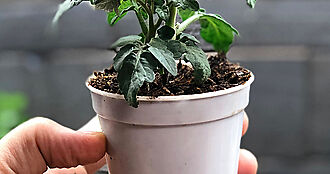Passion Flower
Passion Flower, Passiflora
Passion flower is mesmerizing. It is a fast-growing, woody climber with tendrils that is grown as a perennial vine. The unique flowers are a striking and create a tropical feel in the garden. Most passion flower varieties are native to North America.
Growing
Grow passion flower in full sun or partial shade. This plant prefers well-drained, moist soil of average fertility. Keep it sheltered from wind and cold. In the more northern parts of the state, the vine may die down to the ground during winter, but re-emerge the following spring.
Fertilize passion flower sparingly. Too much nitrogen encourages lots of foliage but few flowers.
Tips
Passion flower is a popular addition to mixed containers and makes an unusual focal point near a door or other entryway. It is perfect for covering an unsightly fence or growing over an arbor.
Recommended
P. caerulea (blue passion flower) sports lovely white and blue flowers. It is best planted on a south-facing exposure to keep plants from dying to the ground in winter. (Zones 8–10)
P. incarnata (maypops) is a vigorous, native climbing vine that produces tendrils to attach itself to a support. It has deeply lobed, ornate foliage and bowl-shaped, fragrant, pale purple to nearly white blossoms, with purple and white coronas, which are followed by yellow fruit.
There are many other species and cultivars available.
Features: exotic flowers in a wide range of colors; some with edible fruit
Height: 10–30' or more
Spread: variable
Hardiness: zones 6–10
Notes: If you plant passion flowers, then the butterflies are sure to follow. Butterfly larvae often eat quite a bit of your passion flower foliage, but plants typically bounce back quickly. The plant is edible: the foliage tastes like peanut butter, and the small, round fruits are edible but not very tasty.



